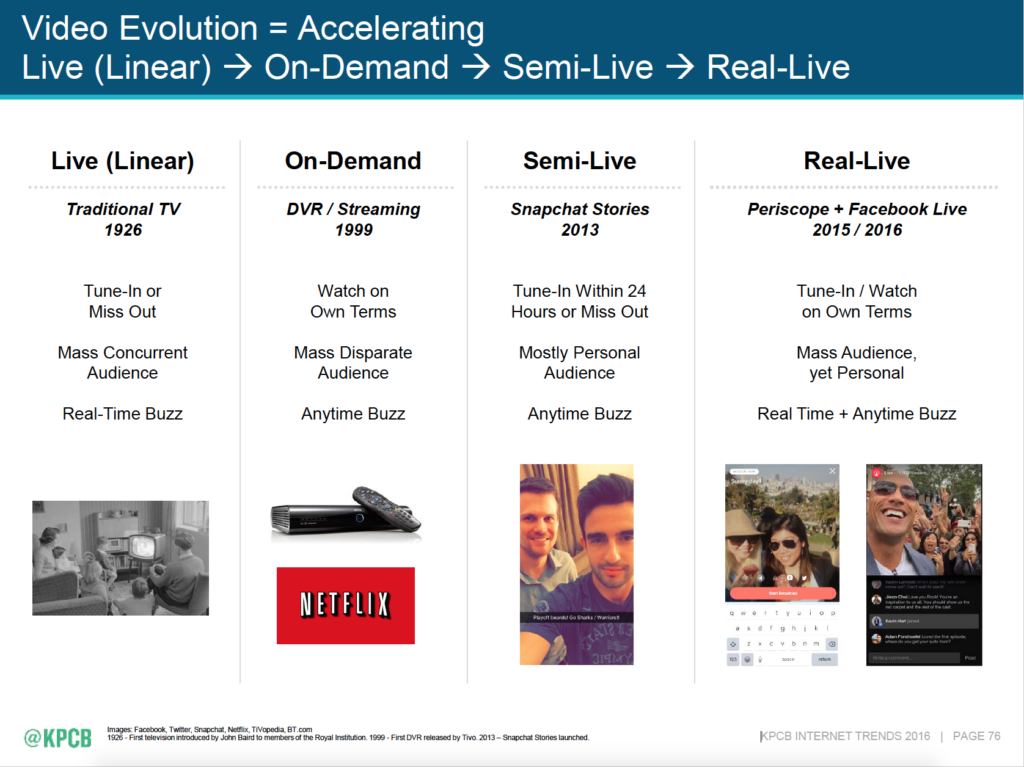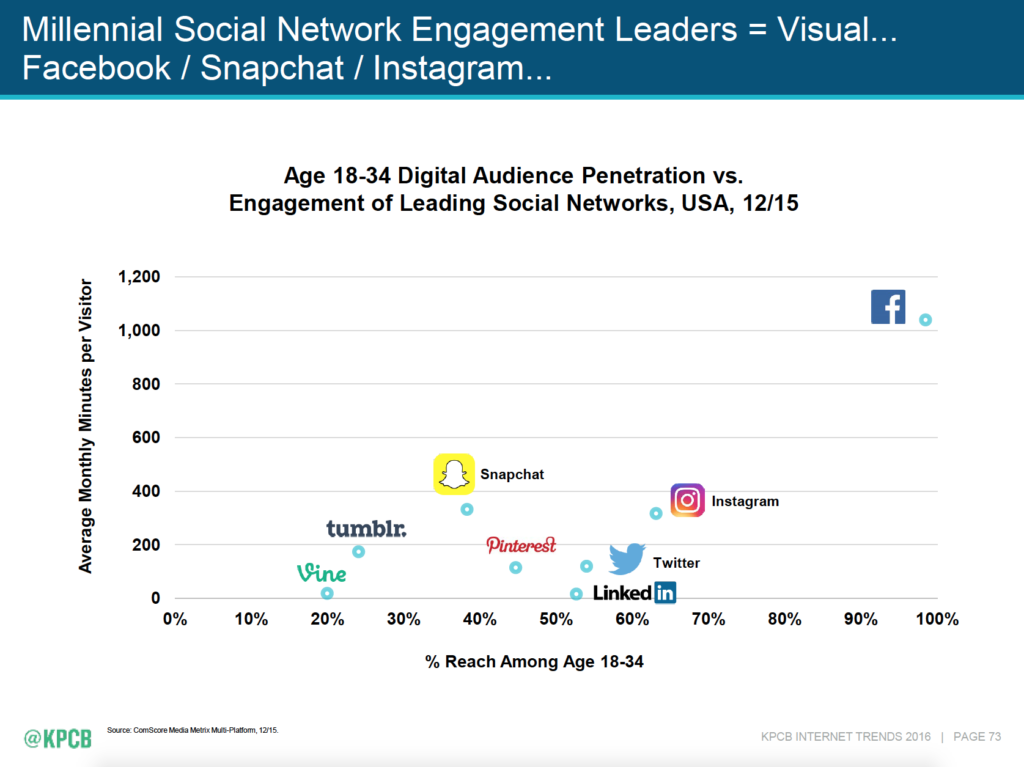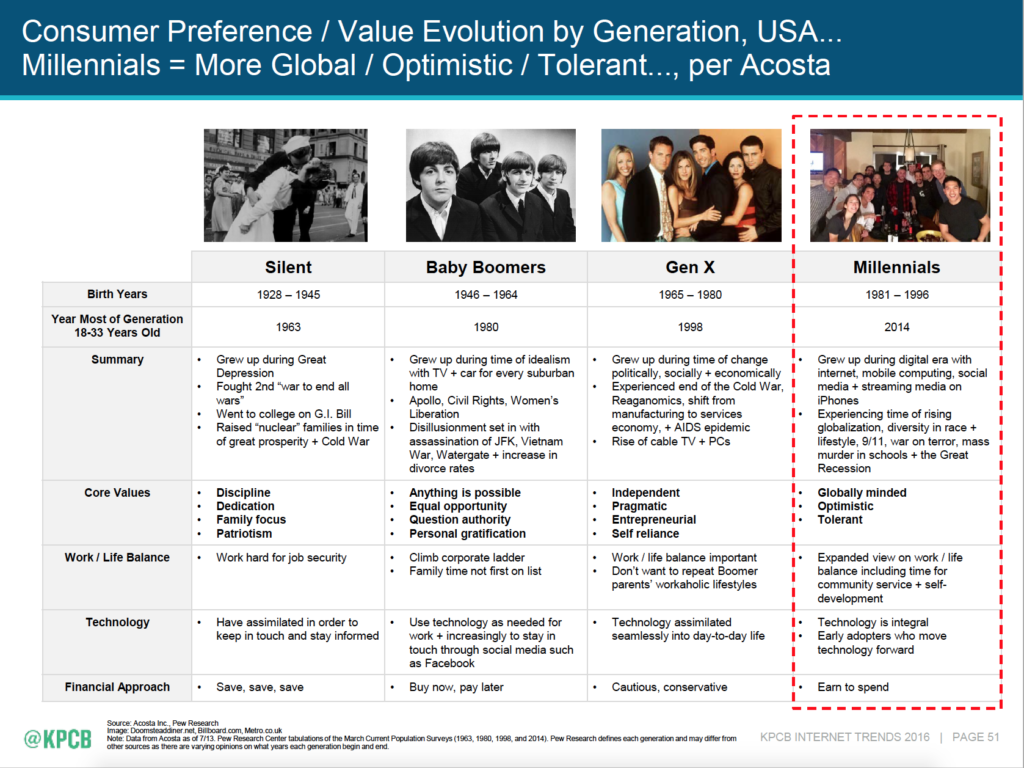Most people who have studied anything to do with the internet since Tim Berners-lee invented it have already heard about Mary Meeker who is something of an internet legend as far as strategy and analysis of the internet trends go. Her annual Internet Trends report goes back as an annual event in itself for many years and for good reason too. The reports contain views based on some solid factual and empirical analysis and have generally proven to be correct all the time. Mary’s 2016 Internet Trends report has been released with some rather fascinating insights for businesses who should take note if they want to ‘get the jump’ in the coming year or years in the digital space.
Her full report is included below, however, some of the key points have been extracted here for discussion.
Global internet adoption rate has flattened for the second year in a row at 9%. This is still a sizeable rate on a truly massive number, but the stellar growth is starting to slow down largely because unless babies are going to start being born with an iPhone (and Apple is likely working on that), then just about everyone who possibly can have some connectivity to the internet already has. Which highlights some of the third world issue, but that is part of a different study. In Australia, Internet connectivity hovers around 93% of the population have it, the rest are babies.
With the speed of the internet increasing all the time, 4G becoming ubiquitous then video is exploding led by Snapchat, Facebook live streaming and YouTube, all of which have made it easy to share video now. Although not mentioned, devices with HD capabilities are more prevalent and this is enabling anyone with a smartphone the capability to create videos and share them on smartphones. Live video streaming of users content is delivering phenomenal growth as videos such as Candace Payne’s Chewbacca Mask on Facebook live reaches 153 million views in a matter of days.
Streaming is becoming largely the norm as online video sites such as Netflix begin to dominate people’s viewing choices in what sounds like the death knoll for traditional free to air channels and the advertising revenues that they represent.

Video is evolving to combine the control of video on-demand and direct communication to mass audiences and live broadcasts
People are still sharing images and this is still the strongest (for the time being) and this is lead by SnapChat. Users are building their own new revenue streams on apps like SnapChat and Instagram where those with a large following and a specific niche are being offered money to promote a good or service.

Social Network Engagement
Messaging is dominated by Facebook and WeChat (for China) and this is growing rapidly with apps like WhatsApp which have made Comms giants like Telstra and Optus lose out big on text messaging.
A huge prediction is being observed by Mary Meeker in the rise of voice search, with Google noting that more than 20% of searches are no longer text based.Google and Facebook now control about 76% of the advertising market, but its also clear that there is still too much being spent on legacy advertising for far less effect. There is a clear advantage for the early adopters to move into the digital advertising space, gaining the first mover advantage. In addition to this, there is further opportunity for mobile advertising with desktop ad-blocking up by 96% and this is led by China and India. Advertisers need to make their advertising more entertaining and less intrusive or risk offending their audience.
The United States being the once giant of the auto industry is set to possibly make a resurgence in the innovation with Tesla, Google and Apple all working heavily on telematics and vehicular automation and their homegrown business for car-sharing/pooling Uber and Uberpool being set to becomg a booming global business. With the emergence of voice as a more dependable interface lead by Apple Siri and Android’s offering, the combination of these in to cars will certainly become a more used method of controlling devices while driving. See our Chandler, Arizona, limousine service right here. that uses this feature which is being enjoyed by all the clients after using them.
Generational group Millennials are no longer just an age group, they are a force with a unique set of values and with a bigger focus on work-life balance, self-development and community contribution. Their purchasing power is set to become a major force with most of them expecting to be millionaires earlier in their lives and less interested in property ownership.

Consumer preference/value evolution by generation. Millenials more global, optimistic and tolerant.
The emerging Generation z cares more aboutuser experience, ease, personalisation and aligned values when compared to millenials who focus on price and comprehensiveness. This is a major insight for organisations wanting to target these markets are are spending up on UX design. While there is clearly a place for the money being spent on UX, other research suggesting people to be careful are indeed correct when stating that it is potentially at the expense of other market segments.
The internet enabled physical brands is again on the rise with Apple being named the most successful combination. Australian stores such as JB HiFi are really taking these combinations to the next level leaving a clear opportunity for stores like Myer and David Jones if they can develop their omni-channel approach.
Non-tech companies have changed their tech investment strategies by purchasing tech companies as a means to accelerate their technology innovation. Particularly the big consulting companies and investment bankers who have invested in data mining companies, analytics and cloud applications as a means to facilitate their plans to supply a range of services to businesses.
As devices to generate data are increasing rapidly (Apple TV, gaming devices, mobile computers fitbits, social applications and cars themselves) the third wave of data management is becoming even a bigger one that the previous. Data is becoming more powerful than ever and the new tools are giving more people in organisations the ability to make data driven decisions. Cloud platforms such as Salesforce are very quickly moving these activities from the CIO’s office and into the business. CIO’s must either become the enablers of this and facilitate, or the business, armed with a credit car will be able to do it themselves. Applications such as SalesforceIQ are user friendly, easy to set up and deliver major results in analytics to place businesses way ahead in this part of the game but they are not without their challengers such as DataDog which is a cheaper alternative, easier again but of course not as configurable, it does nevertheless provide a leapfrog approach for the business that wants to get in and get started quickly.

Evolution of the data platform
Data security using network incident detection tools was also earmarked as a major focus as businesses start to operationalise their API’s and make them available for partners and customers. With the ‘opening of the gates’, it becomes imperative that businesses lock down their security or risk bigger problems.
There is a stack of data in the presentation which will help any business cases in technology and they are well sourced. It pays to have a good read through and if you find other insights I missed, please leave a comment.

